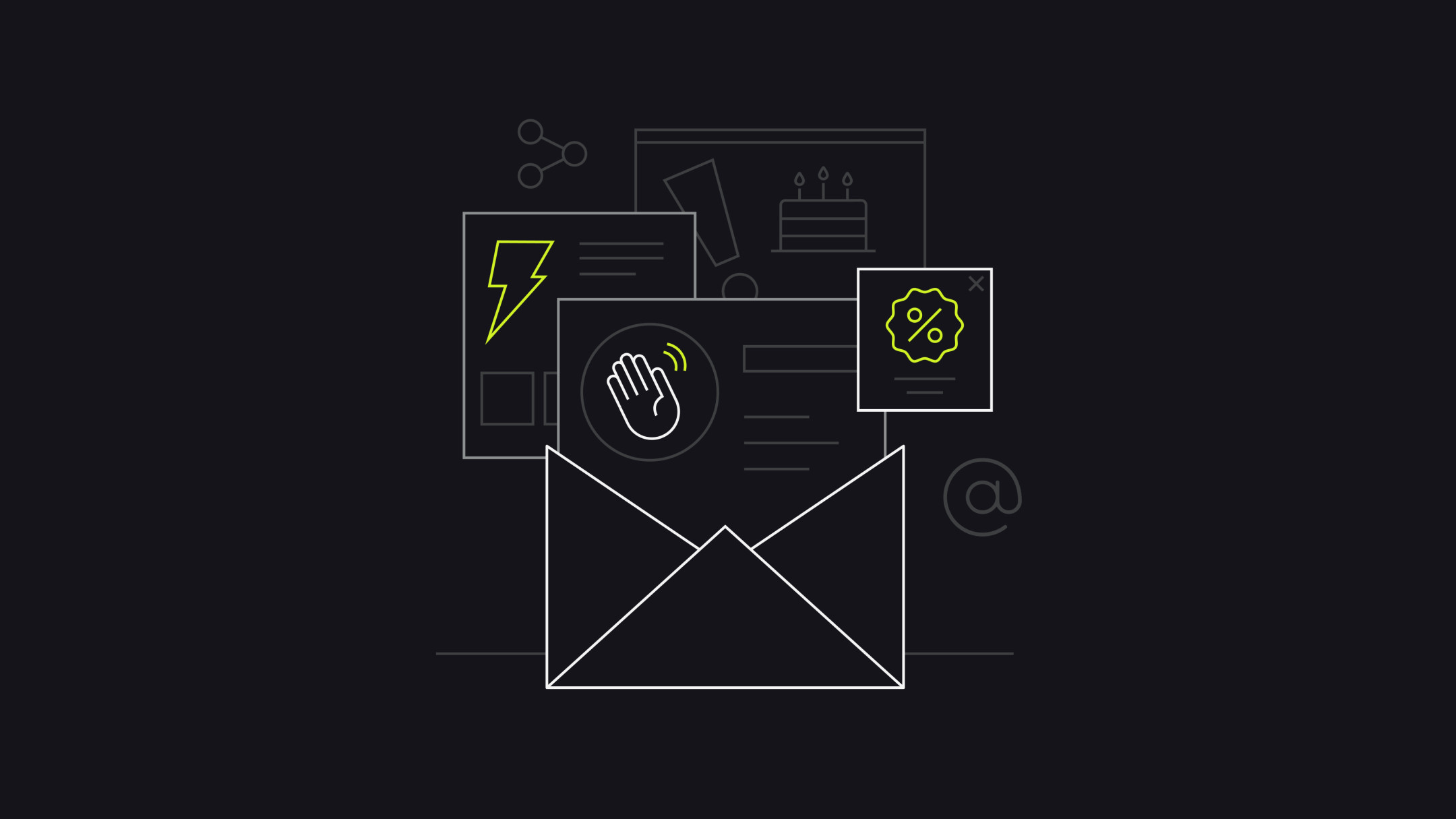Editor's Note: This post was originally published in April 2018 and has since been updated for relevancy and accuracy.
Once deemed low-tech, and passé, email has come back in a big way.Countless journalists and personalities cut out the publishing middleman by launchingtheir own Substack newsletters and monetizing their content through paid subscriptions or Patreon accounts.
The demand for straight-to-inbox content hasn’t just been limited to journalists though—consumers are also increasingly willing to subscribe to brands’ newsletters. According to a recent HubSpot global survey,78% of marketers have seen an increase in email engagement over the last 12 months.
For brands selling online, a strong email marketing strategy extends beyond newsletters and offers a low-cost way to market your products, ensure carts aren’t abandoned, and develop lasting relationships with your customers. Email marketing is also one of the most reliable and effective forms of digital advertising,with higher conversion rates than both social media and search engine traffic. Unlike buying ads elsewhere, how the content is distributed isn’t controlled by third-party gatekeepers; algorithms and SEO also don’t dictate how many people receive your message.
“Nobody can take your email list and owned channels away from you or charge you more money for the privilege of reaching your own audience,”writes Chris Newton, email marketing platform Klaviyo's former inbound marketing manager.
For the consumer, the most powerful email drip campaigns aren’t just perceived as a means to exclusive discounts and loyalty programs—they also provide valuable content and a way to engage with their favorite brands.
“Email is so important because it’s one of the most effective tools for building relationships,” Dan Oshinsky, founder of newsletter consultancy Inbox Collective,toldthe Washington Post.
But like any relationship, earning brand devotees through drip marketing takes time, effort, and careful consideration of their wants and needs.
From the moment a customer visits your site for the first time, to when they decide to take the relationship to the next level by making their first purchase, we’ve rounded up email marketing tips that will help you see the relationship through—and make sure they never unsubscribe from you.
- Make the first move: Get your new visitor's email address with a pop up
- Don't wait to call: Send a welcome email immediately
- Build on your relationship: Schedule regular drip emails tailored to their interests and needs
- Take it to the next level: What to do after a customer has made their purchase
- 避免分手:创建社区意识they don’t unsubscribe
1. Make the first move: Get your new visitor’s email address with a pop up
Getting a potential customer’s email address is one of the most valuable pieces of marketing collateral.According to the DMA Marketer Email Tracker 2020 report, for every $1.00 you spend on email drip marketing, you can expect an average return of $35.
But trying to woo a new visitor into divulging personal details isn’t unlike trying to pick up a stranger from across the bar. You don’t want to come on too strong, but if you don’t make a move they might navigate away from your site, never to return.
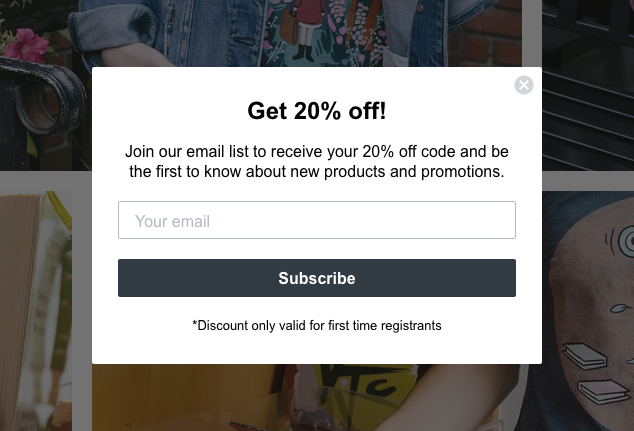
This is one situation where a simple “call me maybe” won’t do the trick. Instead, there needs to be some sort of incentive for getting them to subscribe to your list. You can’t send a drink their way, but you can offer up an incentive to engage with you on their terms. Typically, this means dangling the carrot of a discount or free shipping for new subscribers, but it could also mean promising enrollment into a loyalty program, subscriber-only exclusive content, or the chance to win a contest.
文字-动作可以放在你的网站的header, footer, or sidebars, or on social media. But this is the equivalent of lurking in someone’s peripheral vision in the hopes they’ll notice you, rather than approaching them directly. While some consider them obtrusive, pop ups continue to be one of the most effective ways to get your user’s attention—and their email addresses.
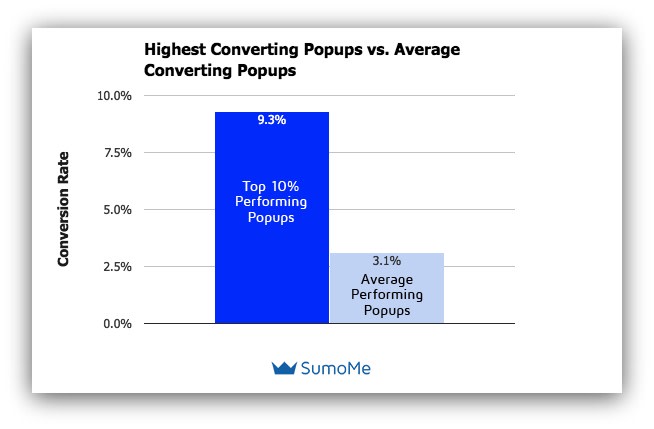
Sumo, an email capture tool, analyzed the performance of almost two billion pop-ups.What it found was that the average conversion rate for collecting an email address was 3.09%, with the highest-performing pop-ups having a conversion closer to 9.28%. Three percent might sound relatively low, until you consider that for every 100,000 people who visit your site, that’s 3,000 new email subscribers.
Sumo’s research also found that the most effective pop-ups don’t appear immediately; they’re timed to coincide with when a customer has had time to browse and perhaps consider making a purchase. You wouldn’t ask for someone’s phone number without even saying hello; you'd give them a bit of time to get to know you first.
When the pop up does launch, make the following clear: What can customers expect to receive in return for their email address? How will you use their contact information? How often will you contact them?
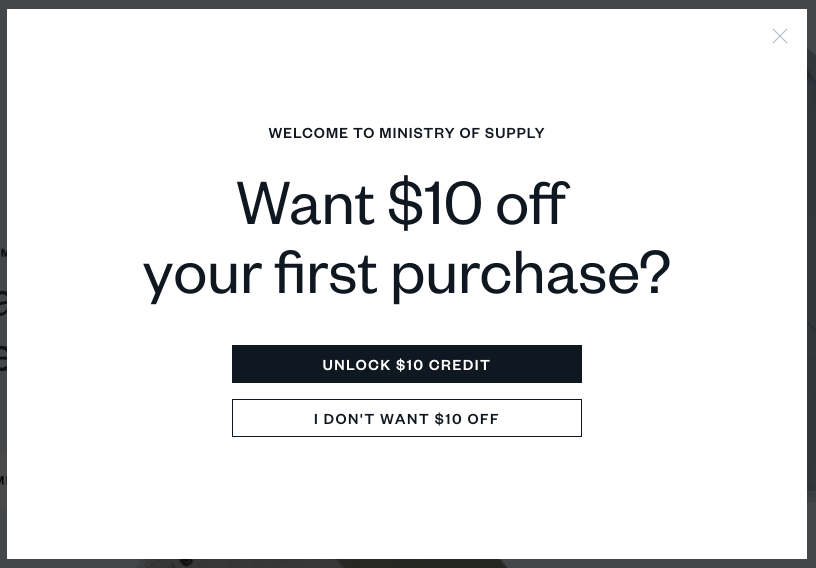
This is also your opportunity to collect basic information about which of your email marketing segments they belong to, such as their gender or what products they’re interested in.
2. Don't wait to call: Send a welcome email immediately
Once you’ve got your shopper’s email address, it’s up to you to make the first move.
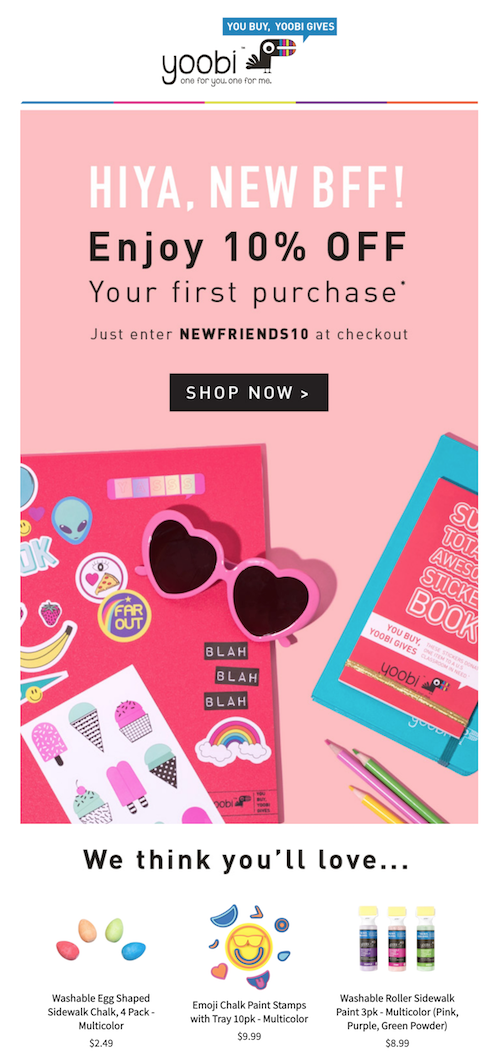
Shoppers have come to expect a welcome email, which is why they're one of the most effective drip emails that you’ll send.Open rates for welcome emails sit at about 91%andhave a read rate that’s 42% higher than the average email. People are also five times more likely to click through on a welcome email.Like most other components of your email marketing strategy, they can also be fully automated.Using Shopify Flow templates,you can use integrated email marketing tools such asKlaviyoandOmnisendto ensure they’re sent out automatically.
The messaging in the welcome email is important though. Again, you don’t want to come on too strong—this isn’t the time for hard sales. Instead, it’s about setting a tone for your brand, welcoming them to your community, and confirming that the shopper did, in fact, sign up for your list. If you promised a carrot in exchange for their contact details (such as a discount), this is also the time to prove your intentions are honest by providing it.
3. Build on your relationship: Schedule regular drip emails tailored to their interests and needs
Subject lines and sales strategies
Once you’ve got your subscribers on board, it’s time to start sending your promotional emails.
你怎么经常与用户联系促销depends on a number of factors. In addition to carefully monitoring your click through and unsubscribe rates, you’ll also want to consider how often you have promotions or new stock in-store. And most importantly, how often are you able to generate new content?
In the age of the editorial newsletter, this last question is particularly important to answer. Subscribers may just be looking for a one-night sale; but if you want more than a fling, you’ll have to add value to stand out in a sea of suitors.The average person receives around 125 business emails each day, with85% of people indicating that more than half of the emails they receive from brands don’t feel relevant.
The strongest email drip campaigns provide customers with helpful advice, information and a sense of exclusivity, such as subscriber-only insights into upcoming sales, new stock, or limited-run items.
But first, you have to get them to open the email. Enter the subject line. This isn’t the time to get poetic: “Sweet summer solstice savings” might hit the alliteration button, but it’s not nearly as effective as “50% off summer sale.” And while personality never hurts, reign it in on the excessive punctuation and emojis, which are a known turn-off!!!!!In addition to lowering your open rate, they can also trigger spam filters.
The bottom line? Tell—don’t sell—you subscribers on exactly what they’re going to find if they open the email. Finally, consider using a personalized subject line;research indicates these have a 50% higher open rate.
Personalize your content
“The key to driving impact through email is personalization fueled by customer data,” says Leslie Wong, manager of technology partner marketing at Klaviyo. She points to aKlaviyo study that shows high segmented and personalized emails yield three times more revenue and result in 50% fewer unsubscribes than mass emails.“This is compelling evidence for brands to pay attention to each customer's behavior and preferences, then use that data to communicate with them in a relevant and timely manner,” says Wong.
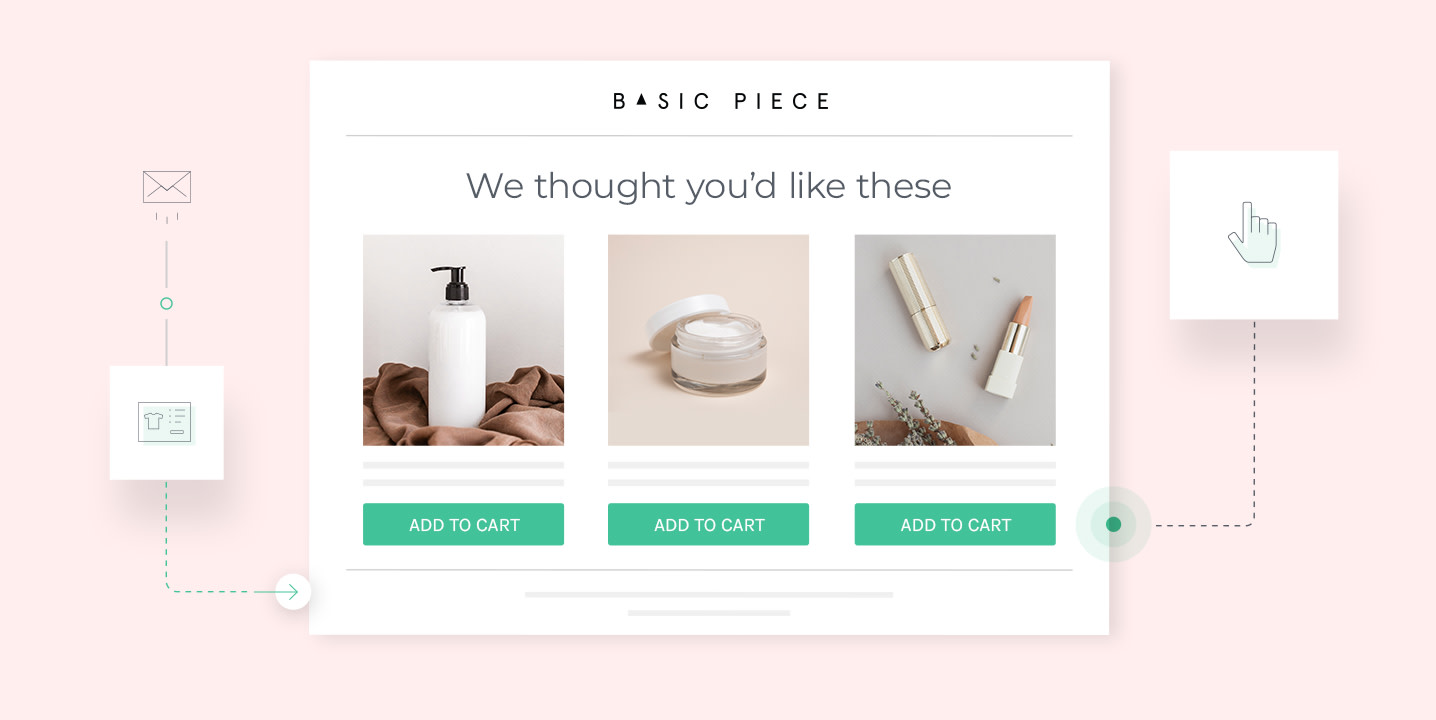
Simply put, the content of the marketing emails should also be as tailored as possible. It doesn’t make sense to enroll a user into your drip campaign who has never purchased or continue to bombard a one-time buyer with rewards and incentives.
For first-time subscribers, if you’re sending out a general email that features multiple product categories or collections, be sure to track the results and where they click. Based on their interests, you can organize them into different segmented groups to ensure they’re receiving the emails most relevant to their interests. (For more information on personalizing drip campaigns, check out Klayivo’sguide to email marketing segmentation.)
For long-time subscribers, Wong says that one of the most common mistakes brands make is not taking a regular “temperature check” for engagement.
“If your best friend suddenly stopped picking up your phone calls, wouldn't you consider why and then check in with them differently than normal? All too often, we forget our email list is made of thousands to millions of these relationships,” she says. If a customer isn’t opening emails, Wong suggests considering adjusting email frequency or sending out a “win-back” campaign that includes specialized messaging or incentives.
Abandoned cart emails
After welcome emails, abandoned cart emails have the highest open rate of any drip emails. They’re also incredibly effective at turning a “I’ll think about it,” to “I’ll take it.” In one study, Klaviyo analyzed millions of abandoned cart emails sent by its users.In three months alone, merchants made an additional $60 million in sales (with an average of $5.81 per email recipient) from sending out abandoned cart emails.
Be prepared to be persistent though;according to Omnisend, sending out three abandoned cart emails results in 69% more orders than a single email.

To improve the results of your cart abandonment email campaign, give your shoppers a reason to click. For example, you could offer an additional coupon code at a higher discount rate or free shipping. (You likely don’t need the research to know this works, but Klaviyo’s study also found that adding a coupon code improves both open and click-through rates substantially.)
However, be careful not to offer this discount too early in the process; it can make you seem a bit desperate,lead to the devaluation of your brand, and train your customers to wait for sales before they hit “purchase.”
4. Take it to the next level: What to do after a customer has made their purchase
Send an order confirmation email
Transactional emails—such as order confirmations—are anticipated by customers. As a result, they have a much higher open rate. For this reason, it’s one of your best opportunities to upsell or cross sell related products, ask a customer to join your other online communities, follow you on social media, or refer a friend.
Send a welcome campaign email
From providing information on where to sign up for a warranty, to how to use a product, welcome campaigns are a critical component of any email marketing strategy.They also have a particularly high open rate of around 50%.
But nobody likes to wait three days after a date for someone to call—and nobody wants to wait three days after receiving a product to receive their welcome email.
To make sure the welcome campaign reaches customers at the same time as their product, you can set up an automated email in Shopify Flow.
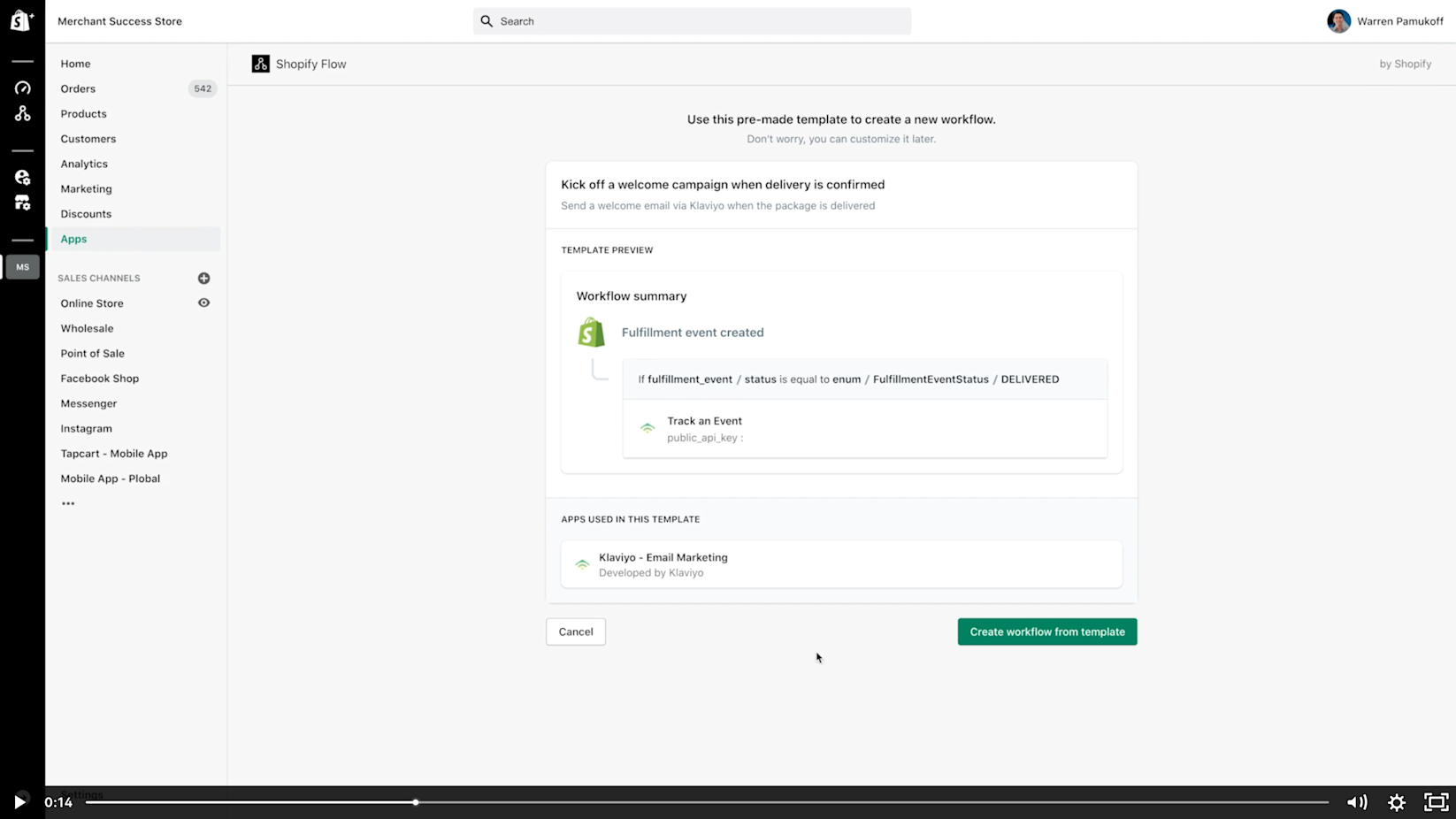
The “kick off a welcome campaign when the package is delivered"template is a Shopify Flow automation that guarantees a post-product experience happens the same day your product arrives into your customer’s hands.
Ask for a review
Once your customer has their purchase in hand, it’s time to ask for a review. When you send out this email depends on the type of product purchased, but in most cases, it’s best to ask for feedback once the customer has had a chance to try out or use their purchase.

Yotpo, an ecommerce marketing platform, analyzed 3.5 million post-purchase review request emails and compared their conversion rates to the average.What it found is that tiny tweaks to the subject line had huge effects on the click-through rates. Yotpo’s advice is to include your store name in the subject line and include a question—and don’t rely on emotional words like “smile” or “happy” or “love.”
5.避免分手:创建社区意识they don’t unsubscribe
Regardless of whether you’re trying to court someone who has never purchased before or maintain your existing relationship with a repeat buyer, making sure they don’t hit the “unsubscribe” button is critical to keeping the relationship going.
In study after study, the main reason people want to break up with a newsletter is “too many emails.” Giving your customers an opt-down option, or the ability to choose how often they want to be contacted, may help with this.
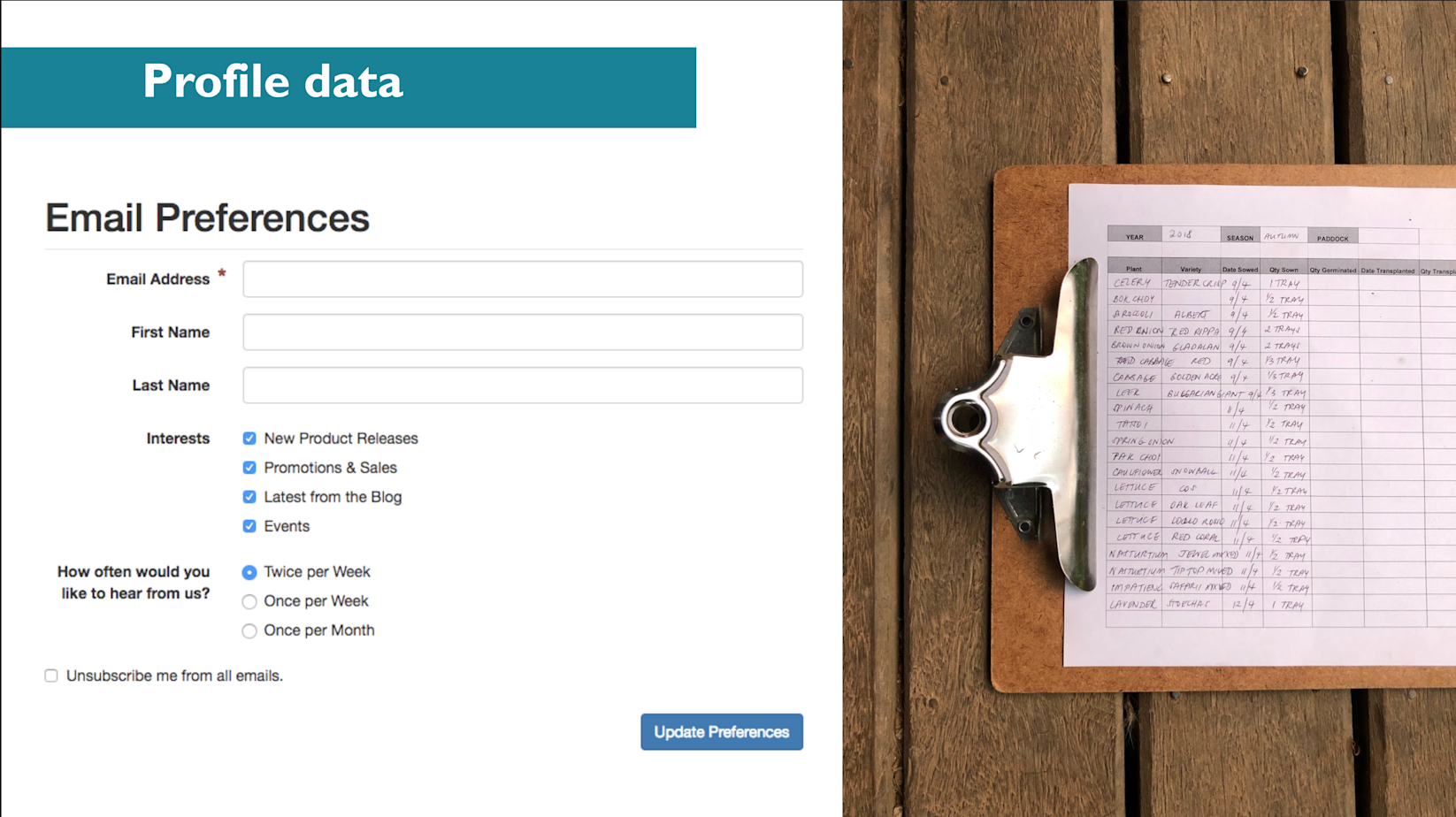
The other most common reasons for breaking up with a brand’s newsletter? Content that’s irrelevant, boring, or repetitive. (Would you go on a third date with someone who only talked about themselves and then repeated the exact same things they said on the first date?)
As demonstrated by the growth of editorial newsletters over the past year, now is the time to reflect on how you can be providing customized content that’s about more than just promotions or sales. Can you send styling tips, recipes, or interviews with experts?
The path to happily-ever-after isn’t purely about drip email marketing that featuresflash salesor bargains. It’s about creating an email marketing strategy that focuses on community and culture. Give your customers something to love about your emails—and they’ll love you right back.
Ecommerce Email Marketing FAQ
What is eCommerce email marketing?
eCommerce email marketing is the process of using email to promote products, services, and special offers to customers and potential customers. It is a way of building relationships with customers, increasing brand awareness, and encouraging customers to make purchases. It involves sending emails with promotional content, such as discounts, special offers, product information, and more. It can also include newsletters, brand updates, and other forms of communication.
What are some e-mail marketing strategies in eCommerce?
- Personalized Content – Create highly personalized content for your subscribers that’s tailored to their interests and preferences.
- Segmentation – Segment your email list into different categories to ensure you are delivering the most relevant content to the right people.
- Automation – Use automated email campaigns to deliver timely and relevant messages to your subscribers.
- A/B Testing – Test different subject lines and email copy to find out which one performs best with your subscribers.
- Dynamic Content – Incorporate dynamic content into your emails to make them more engaging and interactive.
- Re-Engagement Campaigns – Send emails to inactive subscribers to encourage them to re-engage with your brand.
- Cross-Promotion – Promote other products and services related to what your subscribers have purchased in the past.
- Data-Driven Insights – Leverage data-driven insights to improve the effectiveness of your email campaigns.
- Social Proof – Include customer reviews, testimonials, and other forms of social proof to increase trust in your brand.
- Mobile Optimization – Optimize your emails for mobile devices to ensure they look great and are easy to interact with.
Is email marketing important for eCommerce?
Yes, email marketing is an important tool for eCommerce businesses. Email marketing helps to build relationships with customers, grow loyalty, increase sales, and generate more leads. It is also a cost-effective way to reach a larger audience and create awareness of your products and services. Email marketing can be used to send newsletters, promotions, and special offers to customers.
Read More
- You Have 1/20th of a Second: Does Your Site Gain Trust in Time?
- Is Your Agency 'The One'? An Inside Scoop on Finding a True Partnership
- Hypefest 2018: O2O Examples from the Forefront of Marketing & Retail
- International Ecommerce Strategy: New Tools to Simplify Global Growth for High-Volume Businesses
- How 3 Brands Scaled Their Ecommerce Subscription Model 100-350%
- Best Holiday Campaigns with Advertising Examples from 335 Years of Retail
- Ecommerce Agency Automation: Saving Time, Selling More & Launching Faster
- Multi-Channel Customer Acquisition: 7 Tips from $3.7M+ in Ad Spend
- Decoy Pricing: Secret Strategies Your Competitors Use to Get Customers to Spend More
- Win the Ecommerce Holidays with a Strong Customer Acquisition Strategy
